
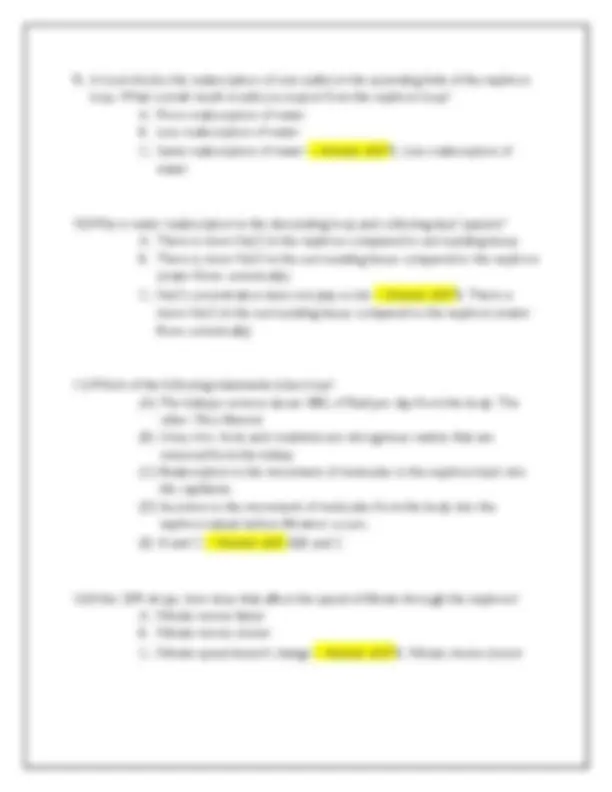
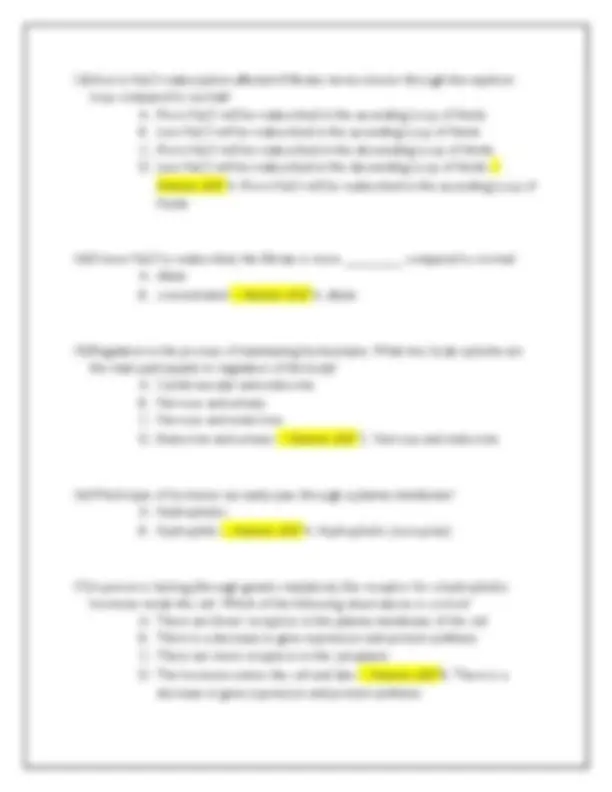
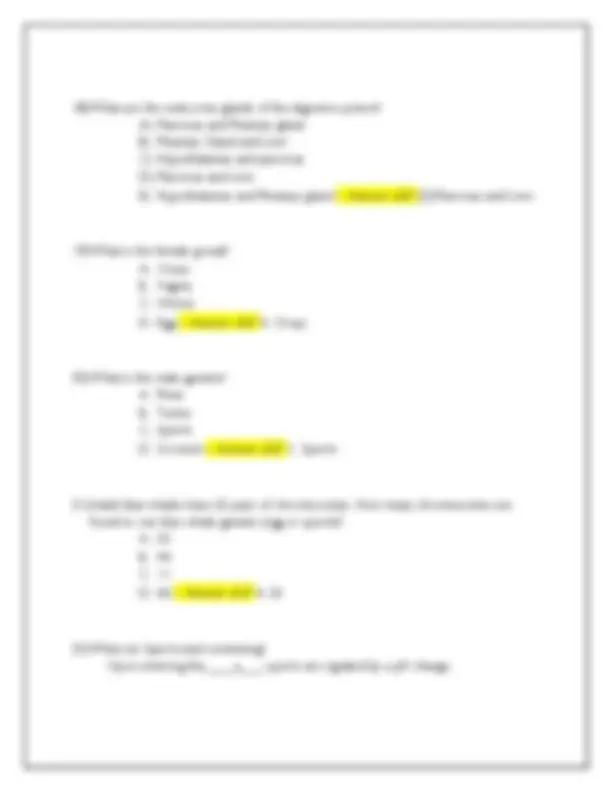
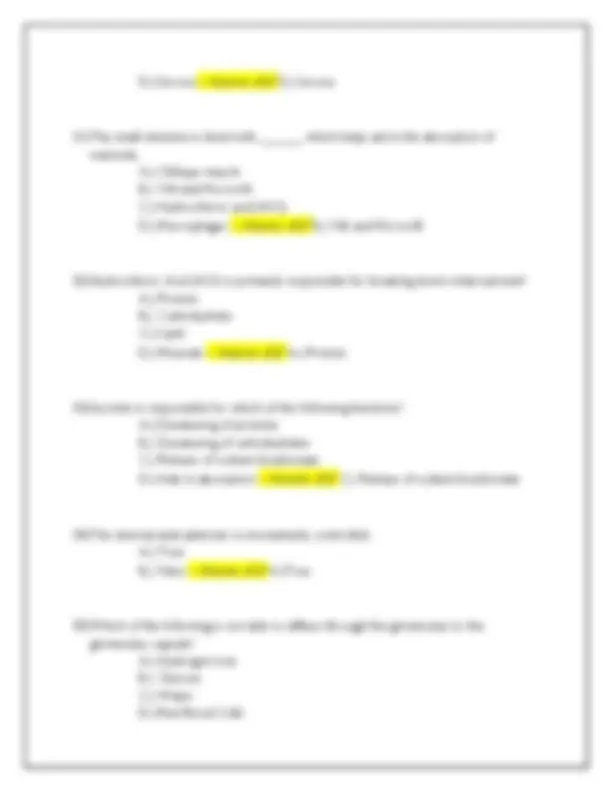
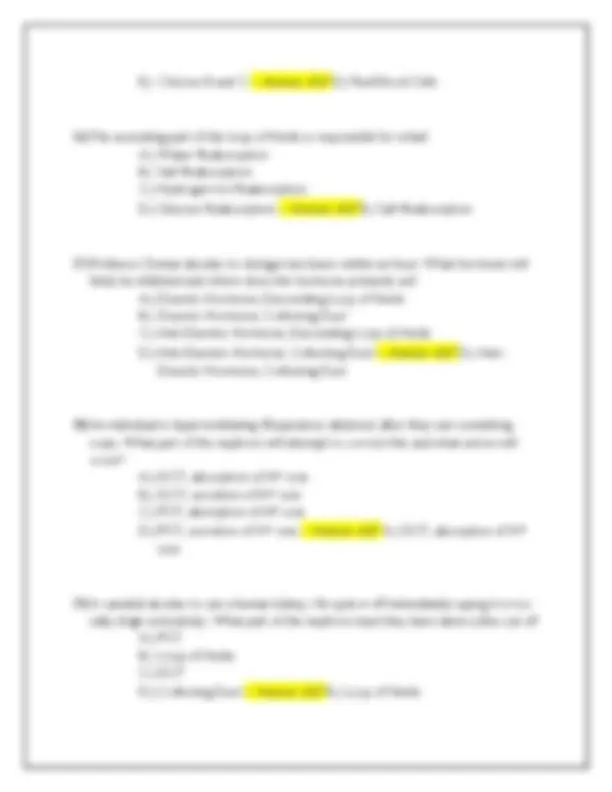
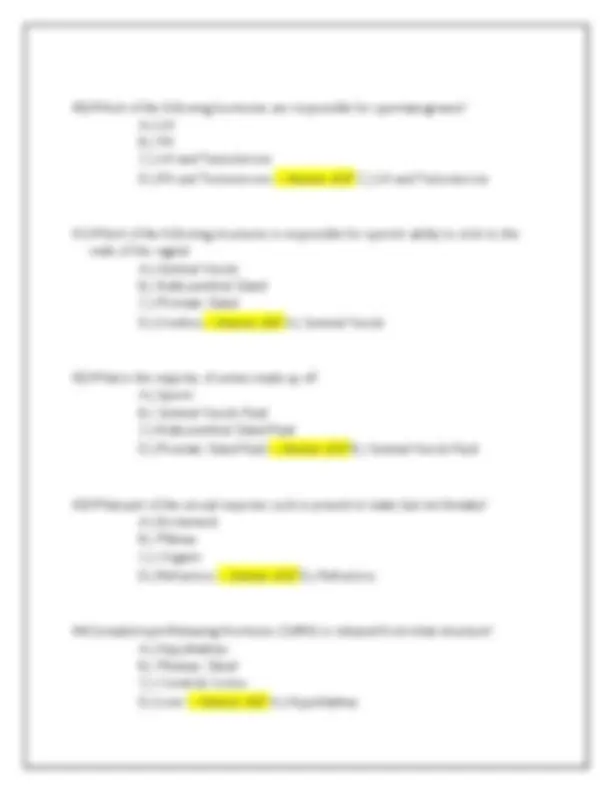
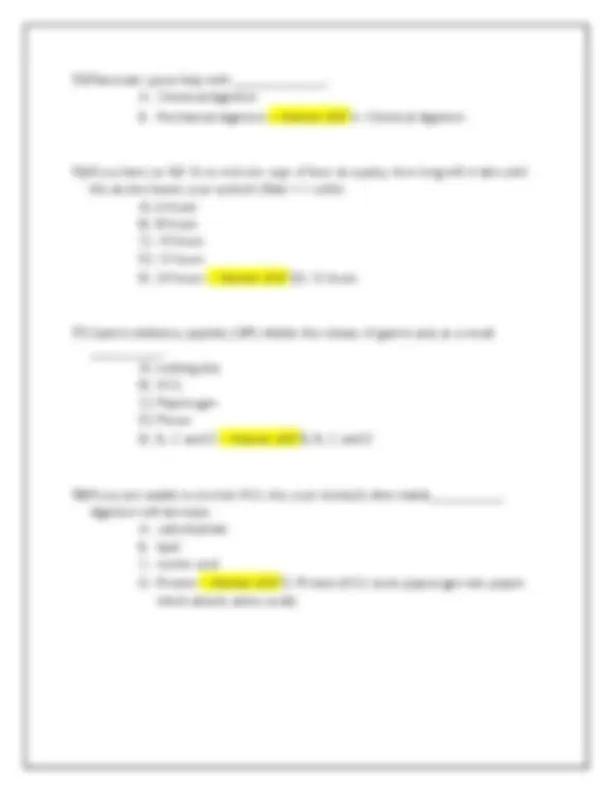


Study with the several resources on Docsity

Earn points by helping other students or get them with a premium plan


Prepare for your exams
Study with the several resources on Docsity

Earn points to download
Earn points by helping other students or get them with a premium plan
Community
Ask the community for help and clear up your study doubts
Discover the best universities in your country according to Docsity users
Free resources
Download our free guides on studying techniques, anxiety management strategies, and thesis advice from Docsity tutors
A set of practice questions with complete solutions for a bio 141 final exam, focusing on the urinary and endocrine systems. It covers topics such as the function of the nephron, hormone action, and the digestive system. The questions are designed to test understanding of key concepts and processes, such as reabsorption, secretion, and hormonal regulation. It is useful for students preparing for exams in biology or related fields, offering a comprehensive review of essential topics. Multiple-choice questions with detailed answers, making it an effective study aid for mastering complex biological concepts. It also covers the male and female reproductive systems.
Typology: Exams
1 / 13

This page cannot be seen from the preview
Don't miss anything!








C. GnRH -- Answer ✔✔ C. GnRH
D.) Serosa -- Answer ✔✔ D.) Serosa